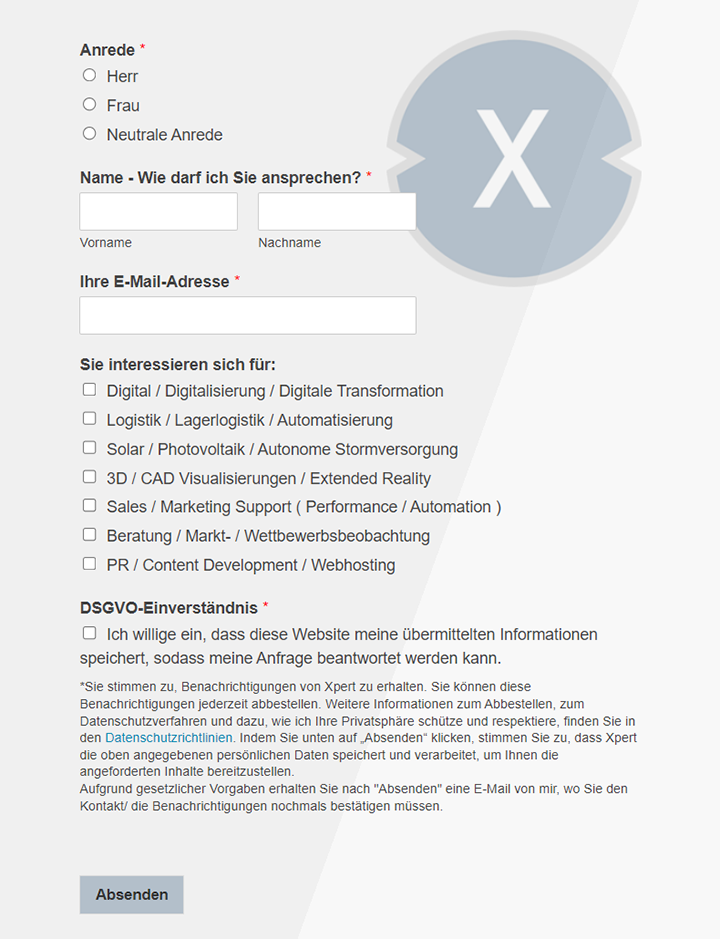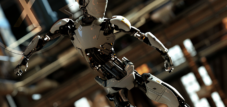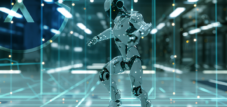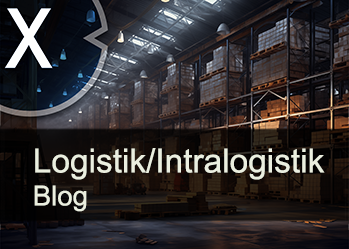The AI-controlled robotics and humanoid robots: hype or reality? A critical analysis of the market maturity
Xpert pre-release
Language selection 📢
Published on: March 28, 2025 / update from: March 28, 2025 - Author: Konrad Wolfenstein

The AI-controlled robotics and humanoid robots: hype or reality? A critical analysis of the market maturity - Image: Xpert.digital
Intelligent machines: trends and visions in robotics
The robotics in change: an analysis of current trends and future developments
The world of robotics is in a profound change. What once existed as a distant future vision in science fiction films is now becoming reality through groundbreaking progress in artificial intelligence (AI), highly developed sensors, innovative material sciences and new manufacturing techniques. These technological advances not only shift the limits of what robots can do, but also change the way we work, live and interact.
A particularly exciting area is the development of humanoid robots - robots that resemble humans in their shape and movements. These machines, which were once considered a pure mind game, are now being pursued by technology giants and start-ups equally with great ambition and considerable investments. The vision is to create robots that not only perform tasks, but can also interact with people in intelligent and intuitive ways.
However, the robotic is much more than just humanoid robots. It is a wide and diverse field that ranges from industrial robots in factories to autonomous vehicles on our streets. Automation, which is made possible by robotics, has the potential to revolutionize a variety of industry, from manufacturing and logistics to agriculture and healthcare. In a world that is increasingly shaped by a shortage of skilled workers, demographic change and the desire for more efficiency and sustainability, robotics become increasingly important technology for the global economy and social development.
Suitable for:
Key developments that shape the future of robotics
Several key trends and developments currently shape the landscape of robotics and will significantly influence their future orientation:
1. The race for humanoid robots
Large technology companies such as Tesla, Nvidia and Google, but also specialized robotics start-ups such as Neura Robotics and Figure Ai, invest massively in the development of humanoid robots. This race is driven by the vision of creating robots that are able to carry out human -like tasks in a variety of environments, from factories and warehouses to private households and even Mars.
2. The expansion to new industries
Robotics find their way into more and more industries and areas of application. In addition to traditional production, robots are increasingly used in agriculture, healthcare, logistics, retail and even in art and entertainment. This expansion is advanced through technological progress and the growing need for automation in various sectors.
3. Technological breakthroughs
Continuous technological breakthroughs in areas such as AI, sensors, material sciences and drive technology lead to increasingly powerful and more versatile robot systems. Robots are able to cope with complex tasks today, to adapt to changed environments, to interact with people and even to learn and even learn independently.
4. The focus on specialists and education
In order to support the growth of the robotic industry and to secure future innovations, it is increasingly being important to recruit and train highly qualified specialists. Universities and universities of applied sciences adapt their curricula to ensure that graduates have the necessary skills and knowledge in order to be successful in the robotics industry.
5. Competition and cooperation
The global robotic landscape is characterized by a complex dynamic of competition and cooperation. Companies and research institutions around the world compete for the development of the best technologies and the development of new markets. At the same time, there are also numerous examples of international collaborations that aim to share knowledge and resources and to promote the development of robotics.
6. Economic Opportunities
The robotic sector offers significant economic opportunities for companies, investors and governments. Market growth is strong and new business models and areas of application are constantly being created. Robotics are increasingly recognized as an important engine for economic growth and technological progress.
Humanoid robots: between vision and market maturity
The development of humanoid robots is one of the most exciting and controversial topics in robotics. While some experts assume that humanoid robots will be omnipresent in the near future, others are more skeptical and consider the current developments more as hype.
Jensen Huang, CEO of Nvidia, a leading company in the field of AI hardware, recently set up the thesis that humanoid robots could achieve broad availability within a few years. Huang sees the initial use of these robots primarily in factories, since the tasks are usually clearly defined and the work environments are more structured. He estimates the annual rental costs for a humanoid robot at around $ 100,000, which underlines the potential economic attractiveness for companies that are looking for automation solutions.
Other companies in the robotic sector also show an aggressive schedule for the market launch of their humanoid robots. For example, Neura Robotics, a European robotics company, plans to introduce its latest humanoid robot, 4ne-1, as early as June 2025. The 4NE-1 should be equipped with three different layers of AI models based on Large Language Models (LLM), which raise its intelligence to a human level and should theoretically enable him to think, decrypt and react to situations like a person. Each of these “skin” layers is said to have millions of parameters to perceive and understand the world around it.
Elon Musk, the CEO of Tesla, is also very optimistic about the future of humanoid robots. He plans to send humanoid robots of Optimus to Mars in 2026 and predicts in the long term that every household will have at least one robot. Musk believes that his Optimus robots will be able to do all the tasks for their owners, including the pick-up of children from school and the function as a personal bodyguard.
These ambitious plans and the aggressive schedule of companies such as Neura Robotics and Tesla indicate an intensive competition, which is not only about the development of the technology itself, but also about the ability to implement production on a large scale and to reduce costs. The different areas of application ranging from factories to private households suggest that different types of humanoid robots with different skills and price classes will be created.
With its Isaac Gr00T N1 platform, Nvidia is positioning itself as an important enabler for the accelerated development of humanoid robots by other companies. This platform represents the world's first open and fully customizable basic model for general robotic thinking and diverse skills. The availability of such basic technologies facilitates and significantly accelerates the development work of other actors in this field. GR00T N1 is characterized by a dual system architecture inspired by the principles of human cognition. “System 1” acts as a fast -thinking action model that reflects human reflexes or intuitions. “System 2”, on the other hand, is a slowly thinking model for conscious and methodological decision -making. Driven by a Vision Language Model (VLM), System 2 analyzes its surroundings and the instructions obtained to plan actions. System 1 then translates these plans into precise and continuous robot movements. GR00T N1 is trained based on human demonstration data and a large amount of synthetic data generated by the Nvidia Omniverse ™ platform. This model is able to simply generalize various common tasks - such as grasping and moving objects with one or both arms as well as the transmission of objects from one arm to the other - or even multi -step tasks that require a long context and combinations of general skills. These skills can be used in various applications, such as in material handling, packaging and quality control. Developers and researchers have the opportunity to train GR00T N1 with real or synthetic data for their specific humanoid robot or their special task. NVIDIA is already working closely with leading manufacturers such as 1x technologies, Agility Robotics and Boston Dynamics, who have received early access to GR00T N1 in order to promote the development of their humanoid robots.
Suitable for:
Global investment landscape: China vs. USA
The global investment landscape in the field of humanoid robotics shows significant differences between China and the United States in terms of their strategies and focus. China is massively investing in the development of humanoid robots, with this efforts to be supported by state initiatives and large technology companies. These strong investments underline China's ambition to play a worldwide leading role in the field of robotics and artificial intelligence. A clear sign of this is the laying down of a state-supported venture capital fund by the Chinese government with a volume of impressive $ 138 billion, which focuses on the promotion of robotics, AI and other top technologies. China has already established itself as the world's largest market for industrial robots, which illustrates its existing strength in the area of automation. In addition, Chinese companies have significant cost advantages that result from their superior production capacities and the associated scale effects. A concrete example of this is UNTETREE ROBOTICS, which offers its humanoid robot G1 at a significantly lower price on the market than comparable models of competitors from the United States. This cost leadership, combined with a high patent activity in the area of “Humanoid”, in which China is leading worldwide, could give the country a strategic advantage in global competition. The state -directed investment strategy of China and the consistent focus on the integration of robotics with other key technologies such as the AI could give the country a decisive advantage in global competition. The emphasis on mass production and the lower costs could lead to a faster and wider spread of humanoid robots in various economic sectors.
Significant sums are also invested in robotics startups in the United States, whereby these investments are often carried by venture capital companies and established large technology companies. This shows that the USA take the growing competition in the field of robotics very seriously and strive to defend its traditional leadership role in the field of technological innovation. An example of these investment activities is the startup Apptronik, which is supported by Google and Nvidia and recently received a significant round of financing in order to advance the development of its humanoid robots for industrial applications. Another promising company is Figure AI, which has also received considerable financing in which well -known technology companies such as Nvidia, Openai, Microsoft and Intel Capital were involved. Compared to China, a stronger focus on the development of advanced AI technologies for humanoid robots seems to be a stronger focus in the USA. In view of the increasing competitive pressure, US robotics companies are calling for the development and implementation of a national robotics strategy in order to be able to exist in global competition with China and other leading nations. While China relies on state support and its immense production capacities, the United States seem to see their strength primarily in basic research and the development of Hochmodern AI. The close cooperation between aspiring startups and established technology companies in the USA could lead to fast and groundbreaking innovations, but the scaling of production and the associated costs could continue to be a challenge.
A direct comparison of the investment landscapes in both countries shows that both the USA and China as dominant forces appear in the global robotics competition. A current study has shown that US and Chinese robotics startups together have attracted impressive 75% of all venture capital investments in this sector between 2018 and 2024. The United States led $ 49.9 billion with a total investment volume, while China recorded investments worth $ 24.4 billion in the same period. However, it is important to take into account that a significant part of the investments by state -supported funds flows in China, which relativizes direct private investments. The dominance of the United States and China in the investments underlines their leading role in the global robotics competition. The different financing models-primarily private venture capital investments in the USA versus, strongly state-supported investments in China-could significantly influence the speed and the type of technological innovations in both countries.
Our recommendation: 🌍 Limitless reach 🔗 Networked 🌐 Multilingual 💪 Strong sales: 💡 Authentic with strategy 🚀 Innovation meets 🧠 Intuition
At a time when a company's digital presence determines its success, the challenge is how to make this presence authentic, individual and far-reaching. Xpert.Digital offers an innovative solution that positions itself as an intersection between an industry hub, a blog and a brand ambassador. It combines the advantages of communication and sales channels in a single platform and enables publication in 18 different languages. The cooperation with partner portals and the possibility of publishing articles on Google News and a press distribution list with around 8,000 journalists and readers maximize the reach and visibility of the content. This represents an essential factor in external sales & marketing (SMarketing).
More about it here:
How Ki Humanoid robots prepared for new tasks
AI as a driving force: intelligent robots in the real world
The integration of artificial intelligence plays a crucial role in the control and interaction of humanid robots in the real world. A remarkable example of this is Gemini Robotics from Google, which is based on advanced AI models that build on Gemini 2.0 to control robots directly in the physical world. This represents significant progress in robots' ability to manage complex tasks and to react to changes in their area in real time. Gemini Robotics is described as a “Vision-Language Action” (VLA) Generalist model, which is able to carry out liquid and reactive movements and at the same time be robust compared to variations in object types and their positions. It can also be found in previously unknown environments and a variety of open, open linguistic instructions can also be found. The system works by picking up visual and linguistic information and directly issuing the actions that a robot is supposed to do. Gemini Robotics can be used for a wide range of manipulation tasks, including those that require a long planning horizon and high skill. The system's ability to learn new short -term tasks from just about 100 demonstrations and adapt to completely new robot designs is also remarkable. However, Google also emphasizes the important security considerations that must be taken into account in connection with this new class of robotics basic models.
With Cosmos, Nvidia has also developed a platform that aims to accelerate the development of robots and autonomous vehicles. The main goal of this initiative is to facilitate the development of robots by providing more realistic simulation environments. Cosmos uses so-called “World Foundation Models”, which simulate the physical world as AI systems, including physical laws, spatial relationships and dynamics of movement. This enables the training of autonomous systems in completely virtual environments, which significantly reduces the need for the often costly real data acquisition.
Suitable for:
- Robotics AI turbo for industrial solutions with artificial intelligence in Industry 4.0 – when things have to happen quickly
Robotics in different areas of application: a growing presence
The robotics find its way into more and more areas of application that go beyond traditional production:
Safety robotic
Samsung plans the introduction of four -legged security robots, which indicates a growing interest in robots for security applications. These robots could take on surveillance tasks in various environments and also move in uneven terrain and on stairs.
Autonomous delivery robots
Autonomous delivery robots are becoming increasingly important and driving automation in the entire delivery system. They represent a promising solution for the complex challenges of the “last mile” in urban delivery traffic.
Agriculture
The vision of comprehensive automation in agriculture, often referred to as the “1 Hof-1 robot” era, stipulates that robots are used to a large extent at every agricultural operation. You can take on tasks such as precise planting and sowing, the autonomous harvest of crops and targeted weed and pest control.
Support for emergency services
Firefighters are developed and used to increase the safety of firefighters in dangerous use scenarios. These robots can penetrate in environments in which human emergency services would be exposed to extreme risks.
gastronomy
In the catering, cooperative robots, so -called cobots, move in and increasingly automate tasks such as mixing drinks. This development has the potential to increase efficiency and at the same time create innovative and entertaining customer experiences.
Fashion industry
The automation of camps using robotics is also promoted in the fashion industry in order to increase efficiency and optimize the logistical processes.
Technological innovations as a motor of robotics development
The robot construction is currently experiencing a phase of remarkable innovations:
Flexible and form -changing robots
Robots that change their shape and even disassemble and sit down could be used in very narrow or difficult -to -access areas in the future.
Hybrid robots
The development of hybrid robots, which combine the advantages of both rigid and soft materials, enables tasks to be managed that require a combination of strength and flexibility.
Origami-inspired robot
The principles of origami, Japanese folding art, inspire researchers in developing new robot constructions, for example for light and flexible robot arms for wheelchair users.
Mini submarines for the deep sea
The development of mini-u-boats that can be used in the deep sea represents another significant progress in robotics for extreme environments.
Wireless charging technologies
The development and improvement of wireless charging technologies for robots enables greater flexibility and autonomy, especially for service robots.
The human factor: specialists and skills in robotics
The robotics industry is experiencing an intensive competition for qualified specialists. Companies are actively recruiting experts from other companies to expand their technological skills and know-how. In parallel to the recruitment of experienced specialists, university education plays a crucial role in imparting future -oriented skills in the area of robotics. Universities adapt their curricula continuously to ensure that graduates have the skills and knowledge that are needed in the rapidly developing robotic industry.
Suitable for:
- Future -proof by robotics: - Myths exposed: This is how robotics change the world of work even in small companies
Global dynamics: cooperation and competition on the robotics market
In the global robotic sector, both potential for international cooperation and intensive competition are emerging. There are efforts to promote cooperation between Korea and China in the area of robotics. South Korean robotics companies are optimistic about future cooperation with Chinese companies, especially with regard to the complementary strengths of both countries. The United States recognize the need for a comprehensive national robotics strategy in order to secure their global leadership role in this strategically important technology area.
Economic dimensions of robotics: market development and investments
Hyundai predicts to reach a market share of 80 trillion WON in the robotic sector by 2032. Venture capital companies are increasingly recognizing the attractive opportunities that the use of artificial intelligence and robotics in the logistics industry offers. Automation through robotics proves to be a driving force for innovation and increase in efficiency in a variety of industries.
The promising future of robotics
The robotics industry is located in a phase of the remarkable and dynamic growth, which is largely powered by continuous technological breakthroughs and a steadily increasing need for automation in almost all economic areas. The development of humanoid robots is making rapid progress and it is foreseeable that they could become a reality in various fields of application in the near future. The global landscape is shaped by an intensive competition, especially between the United States and China, both of which pursue different strengths and strategic approaches in order to assert or expand their leadership role in this important technology field. Robotics are used in an ever increasing number of industries, from classic industry to agriculture to diverse service sectors, and contributes significantly to the increase in efficiency, productivity and security. Technological innovations in areas such as flexible robotics, underwater robotics and wireless charging of robots continuously expand the possible uses and the autonomy of these systems. The availability of highly qualified specialists and the development of a clear and coherent national strategy prove to be decisive factors for future success and competitiveness in this dynamic sector. The robotics market offers significant economic opportunities and, according to current forecasts, will have a strong growth in the coming years, which makes it an attractive goal for investments and entrepreneurial activities.
With regard to the future, it can be assumed that robotics will play an even more important role in our lives in the coming years, both in the workplace and in private everyday life. The limits of automation will constantly shift, and robots will be able to take on increasingly complex and demanding tasks. Cooperation between humans and robots will become increasingly important in order to optimally use the respective strengths and achieve synergy effects. At the same time, ethical and social issues in connection with the increasing spread of robotics will gain in importance and require a careful discussion and the development of suitable regulatory framework. Robotics promises a promising future full of innovations and opportunities that will change our lives and the world of work sustainably.
Comparison of investments in robotics between China and the USA (2018-2024)
The comparison of the investments in robotics between China and the USA in the period from 2018 to 2024 shows significant differences in the overall investments, focusing areas and state support. The United States has invested a total of $ 49.9 billion in robotics during the period mentioned, while China invested significantly less with $ 24.4 billion. In both countries there is a focus on humanoid robots, with the USA also investing heavily in AI-controlled systems and China focuses on industrial robots. Another clear distinction is shown in the role of state support: While the United States focuses primarily on private venture capital providers, state funds and initiatives play a crucial role in China. Among the important actors in the United States can be found companies such as Apptronik, Figure Ai and Boston Dynamics, while in China companies such as Unitree Robotics, Agibot and Xpeng Motors are leading.
Examples of agricultural robots and their applications
Robots such as the Robot One of Pixelfarming, which work using laser, machine vision and GPS, enable precise, chemical -free weed control and work autonomously. The Agrobot E-Series ensures the strawberry harvest, which enables a gentle harvest and reducing labor costs thanks to sensors and robotics. The Agrobot Bug Vacuum, in turn, fought pests specifically and efficiently using a vacuum system. The Farmdroid FD20 takes on tasks such as sowing and weed control by combining GPS, precise seeding and mechanical weed removal. This robot works autonomously, offers an exact sowing and is environmentally friendly.
Market forecasts for various robotics segments up to 2032 (in billions of US dollars)

Market forecasts for various robotics segments up to 2032 (in billions of US dollars)-Image: Xpert.digital
Market forecasts for various robotics segments show a strong growth potential by 2032. The service robotic is growing from an estimated market size of $ 22.40 billion in 2024 to forecast $ 90.09 billion in 2032, which corresponds to an average annual growth rate (CAGR) of 19.2 %. Autonomous mobile robots have an even higher growth in the same period, with an increase of 2.2 billion to $ 18.9 billion and a CAGR of 21.8 %. Particularly noteworthy is the supplementary robot segment, which has the highest growth with a CAGR of 29.9 %: Here, an increase of $ 0.3063 billion is expected to $ 3.2261 billion in 2032 in 2024.
We are there for you - advice - planning - implementation - project management
☑️ SME support in strategy, consulting, planning and implementation
☑️ Creation or realignment of the digital strategy and digitalization
☑️ Expansion and optimization of international sales processes
☑️ Global & Digital B2B trading platforms
☑️ Pioneer Business Development
I would be happy to serve as your personal advisor.
You can contact me by filling out the contact form below or simply call me on +49 89 89 674 804 (Munich) .
I'm looking forward to our joint project.
Xpert.Digital - Konrad Wolfenstein
Xpert.Digital is a hub for industry with a focus on digitalization, mechanical engineering, logistics/intralogistics and photovoltaics.
With our 360° business development solution, we support well-known companies from new business to after sales.
Market intelligence, smarketing, marketing automation, content development, PR, mail campaigns, personalized social media and lead nurturing are part of our digital tools.
You can find out more at: www.xpert.digital - www.xpert.solar - www.xpert.plus
































